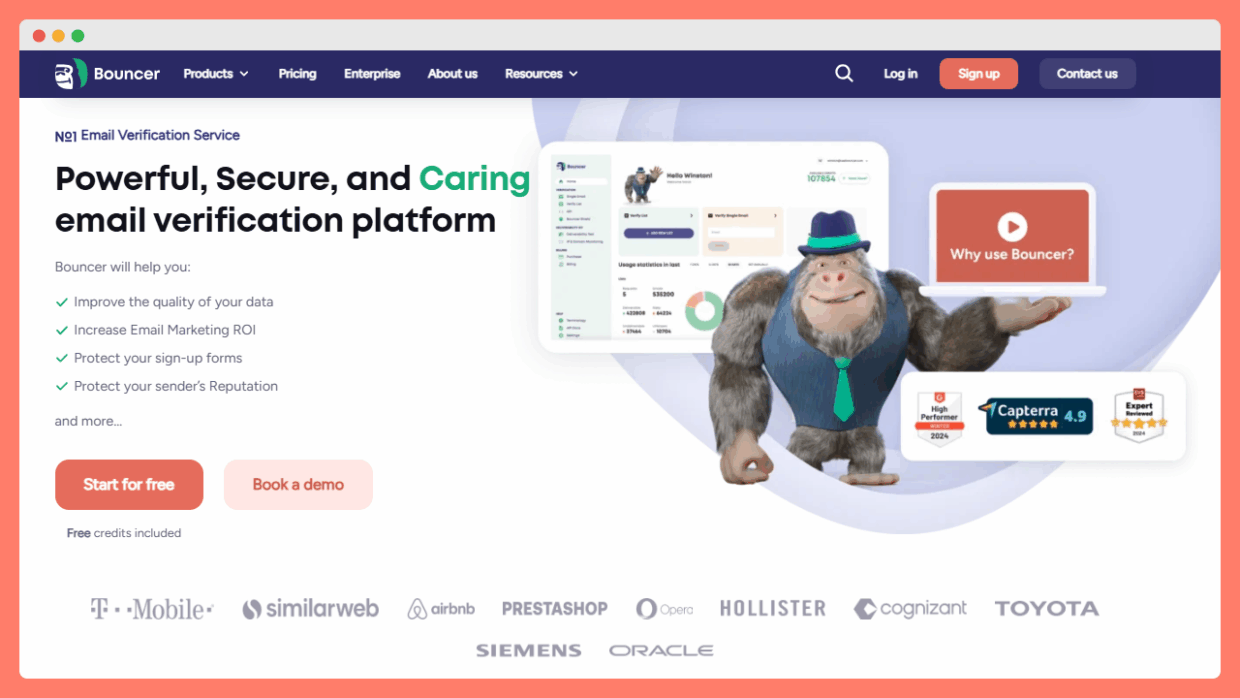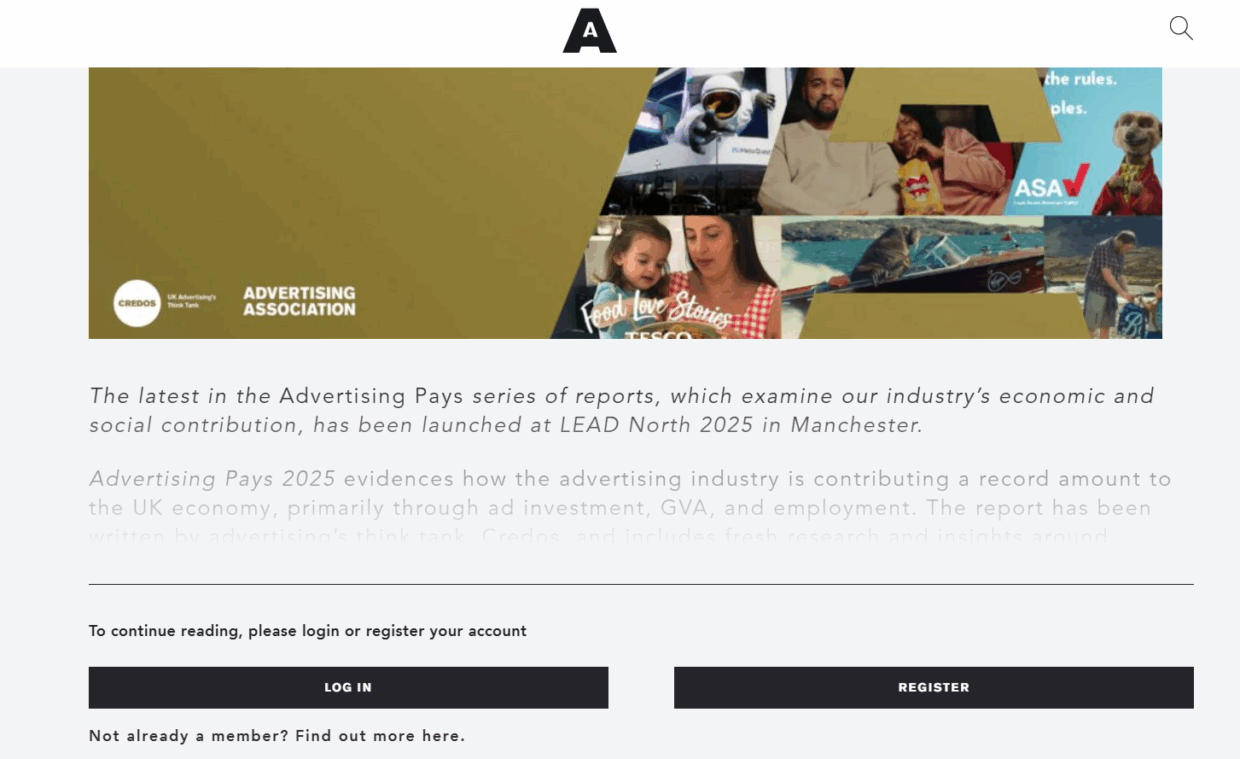What’s really happening at that moment? Why are some doors open and others so carefully guarded?
Let’s find out.
What is gated email verification?
Gated email verification is a term used in two contexts. In email tools, it describes when access to verification features is restricted behind a paywall, free trial limit, or higher pricing tier. In marketing, it refers to the process of verifying email addresses collected through gated content, such as reports or whitepapers that require users to submit their details before gaining access.
What is the purpose of gated email verification in marketing? Lead generation & more
Let’s be real for a second: why do marketers even bother with gated email verification? Isn’t it easier to let people roam free on a website to grab what they want and move on? Maybe.
But think about the reason gated offers exist in the first place. When someone is willing to fill a form with their name and email address, it signals something deeper – interest.
That’s where the magic comes in. By asking for details before giving out an exclusive offer or video content, companies create a natural filter. Only a particular group gets through. And when those email addresses are verified, the messages you send later don’t bounce into the void.
They actually land, and the conversation with your target audience continues.
Think about a college student signing up for online courses through a landing page. Or a shopper grabbing a code from gated promotions designed for new paying customers. If that email is fake, the whole exchange breaks. No brand loyalty, no chance to turn interest into real business.
The purpose of gated email verification in marketing is simple: it protects the lead generation process. You’ve worked hard to create content, build a site, and send the right messages. You want real people behind those sign ups, not dead inboxes or mistyped addresses. And when you verify emails right at entry, your services reach the right hands.
It’s not about collecting a range of random contacts. It’s about being targeted, respecting your reader’s life stage, and building trust.
The note to remember? Gated verification is a powerful tool that makes sure the value exchange is real, for both the company and the potential customers.
Who wants to create gated content? Online courses owners & more
Think about all the forms you’ve filled out to grab a report, a discount code, or some “too-good-to-miss” exclusive offer. Behind that form sits a marketing team guarding their data like gold. These teams run gated email verification. Why? Because every fake entry is wasted traffic and time, not to mention lost revenue.
It’s the go-to move for anyone serious about lead generation.
SaaS companies building templates, retailers pushing gated promotions designed for paying customers, even a small team running online courses. They all use verification.
Every verified email raises the likelihood that their messages displayed later will reach real people. And when that happens, customer satisfaction goes up, brand loyalty grows, and campaigns look a lot more like success than guesswork.
Behind the tech – how does gated email verification work?
Here’s how it plays out in marketing. Someone lands on your website from social media or a link in a campaign. They’re tempted with an exclusive video content or a gated offer. They hit “submit” on the form. That’s when the checks kick in.
- First, the system scans the address for typos. A missing dot? Wrong domain? Easy to spot and edit.
- Then it looks at the email provider. Is it active, or a dead end?
- Additionally, some tools ping the server to see if the inbox is alive.
All of this happens in seconds, invisible to the user. The result? More accurate lists, higher opt in quality, and better benefits for both sides. Marketers get cleaner data and fewer wasted sends. The subscriber gets the download or gated content they wanted without a hitch.
If you’re wondering how to run these checks without building them yourself, that’s where tools like Bouncer step in.

Bouncer’s verification runs behind the scenes in real time, spotting typos, inactive inboxes, and risky domains before they mess up your campaigns. It’s a great tool that helps you save both money and traffic, while keeping your lists clean and ready for action. Try it for free now.

6 examples of gated email verification in marketing
We brought these real-life cases to show you how brands use it in practice. Here are 6 examples of gated email verification in marketing:
#1 Advertising Association – members-only reading
This gate is simple: you hit the report, then you’re prompted to log in or register. No form fields on display, just a hard stop.
Pros:
- It builds a clear boundary.
- Membership has its perks, and once inside, readers feel part of a closed circle.
Cons:
- It can feel harsh.
- A casual visitor might close the browser instead of creating an account.
- The wall is high, and the payoff needs to be worth it.

#2 Market research sample request – the long form
Here, you want a free report? Then you’re prompted to share your first name, last name, business email, and phone number.
Pros:
- Rich data comes in.
- The team can segment by industry, company size, and even country code.
- Sales follow-ups are enabled right away.
Cons:
- It’s heavy.
- Asking for a phone number may scare off potential customers.
- The form feels like work, and not everyone is willing to fill it out for a “sample.”

#3 Axios – newsletter subscription
A clean example. You scroll an article, it fades, and you see a single box: enter your email to keep reading.
Pros:
- Minimal friction.
- The visitor knows exactly what’s needed.
- A quick opt in saves the session.
Cons:
- The trade is blunt: email for access.
- No exclusive video content, no extras.
- If the reader doesn’t trust the value, they’ll bounce.

#4 KPMG Customer Experience Study – topic-based form
This is a smart gate. You’re prompted for basic info, plus a checklist of your top business challenges.
Pros:
- That checklist is clever.
- It enables the company to know exactly what keeps you awake at night.
- Future messages can be tailored to fit your profile.
Cons:
- The form is long.
- Some readers might lose patience, especially on mobile browsers.
- Still, those who finish are usually strong leads.

#5 Wolters Kluwer – Future Ready Accountant Report
Here the gate is less about fluff and more about targeting. You give your name, email, and firm details, then choose your top challenges.
Pros:
- Precision.
- The marketing team can save time by segmenting accountants by role and challenge right away.
Cons:
- Too many dropdowns might slow people down.
- Every extra field chips away at completion likelihood.

#6 Caseware – industry and company data grab
Caseware’s form is straight business: name, industry, country, number of employees, company name. It’s not hiding what it wants.
Pros:
- Clear segmentation.
- Once you’re in, Caseware knows exactly where you fit.
- That enables sharper templates and messages.
Cons:
- Feels corporate-heavy.
- Asking for company size up front might filter out small players who could still be future paying customers.

Looking at these examples, you can see how every gate has pros and cons. But the one thing they all need? Accurate data. That’s where Bouncer shines. No matter if you’re running online courses, a SaaS product, or a retail campaign, Bouncer makes verification fast and invisible to the user. Your team gets stronger sign-ups, your subscribers get the content they were prompted for, and nobody gets stuck with dead emails. Try it now at no cost.

Ready to create your gated offer?
Gated email verification sits at the crossroads of marketing, data, and trust.
From SaaS firms building templates, through publishers nudging subscriptions, to consultants chasing accurate leads… Everyone is trying to keep their lists clean and their conversations alive.
This is also where Bouncer makes a difference. It runs the checks you need, so your team can focus on creating campaigns that actually connect.
Done right, gated verification can enable better targeting, save wasted effort, and turn interest into loyalty. Done poorly, it pushes visitors to close the browser before you’ve had the chance to connect.
So the challenge is yours. Think about what you’re gating, why you’re gating it, and how tools like Bouncer can make sure that every entry isn’t just a form filled but the start of a relationship.

